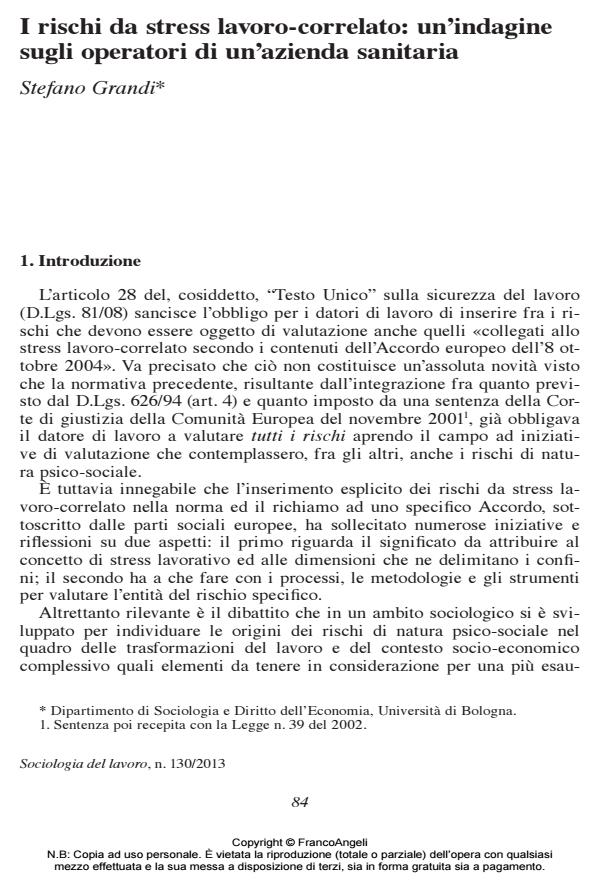The risks from work related stress: a survey on workers of a local health authority
Journal title SOCIOLOGIA DEL LAVORO
Author/s Stefano Grandi
Publishing Year 2013 Issue 2013/130
Language Italian Pages 19 P. 84-102 File size 271 KB
DOI 10.3280/SL2013-130006
DOI is like a bar code for intellectual property: to have more infomation
click here
Below, you can see the article first page
If you want to buy this article in PDF format, you can do it, following the instructions to buy download credits

FrancoAngeli is member of Publishers International Linking Association, Inc (PILA), a not-for-profit association which run the CrossRef service enabling links to and from online scholarly content.
The Legislative Decree 81/08 lays down the obligation for employers to include among the evaluated risks even those ascribable to work-related stress according to Framework Agreement signed by the European social partners in October 2004. This Agreement defines stress as «a state, which is accompanied by physical, psychological or social complaints or dysfunctions and which results from individuals feeling unable to bridge a gap with the requirements or expectations placed on them». The psychological approach adopted in this definition tends to focus on elements related to cognitive assessments and individual characteristics which may lead to neglecting harmful aspects for the workers’ well-being due to the unsuitability of organizational decisions. This article aims to highlight the importance of organizational choices in the emergence of these new risks through the results of a study conducted on a group of workers of a local health authority in northern Italy.
Keywords: Work related stress, prevention, health sector, organization, risks assessment, occupational safety
Stefano Grandi, I rischi da stress lavoro-correlato: un’indagine sugli operatori di un’azienda sanitaria in "SOCIOLOGIA DEL LAVORO " 130/2013, pp 84-102, DOI: 10.3280/SL2013-130006